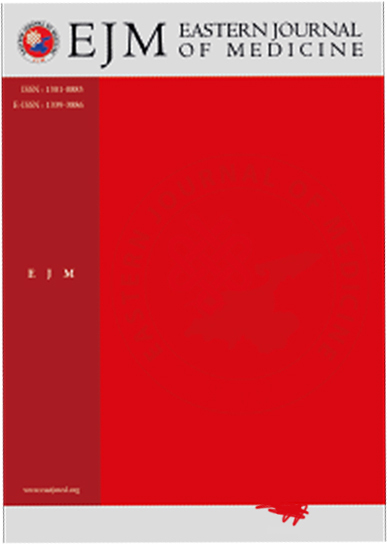Difference Between Learning Strategıes of Team-Based Learning And Case-Based Collaborative Learning Methods In Intern Physicians
Hasan Hüseyin Mutlu1, CEM MALAKCIOGLU2, Mustafa ÇAKIR3, IŞIL MARAL3, Sinem YILDIZ INANICI41Department Of Internal Medicine,family Medicine; Faculty Of Medicine; Health Sciences University; Istanbul; Turkey2Department Of Medical Education, Medeniyet University; Istanbul; Turkey
3Department Of Public Health, Medeniyet University; Istanbul; Turkey
4Department Of Medical Education, Marmara University; Istanbul; Turkey
INTRODUCTION: The aim of this study was to investigate the effects of intern physicians' participation in team-based learning (TBL) and case-based collaborative learning (CBCL) methods on their learning strategies and motivation.
METHODS: Our study is a triangulation study in which both qualitative and quantitative data collection tools were used. Both methods were applied over a four-week period in the practices carried out on 169 intern physicians in the Public Health Internship at Istanbul Medeniyet University Faculty of Medicine in the 2021-2022 academic year, and the results were evaluated using the Motivation and Learning Strategies Scale (MLSS). Frequency and percentage calculations were used to interpret the data. In addition, a correlation test was performed to determine whether there was a relationship between the scale scores.
RESULTS: Results indicated that CBCL had a slightly higher effect on students' internal goal organization and self-efficacy compared to TBL. However, both methods were similarly effective in other learning aspects like peer collaboration, critical thinking, and metacognitive strategies. Focus group feedback highlighted that CBCL's realistic case approach enhanced students' motivation and practical understanding. Conversely, TBL was appreciated for making theoretical knowledge more engaging through clinical case tracking. In conclusion, both TBL and CBCL fostered a supportive, collaborative learning environment, with CBCL having a stronger impact on motivation.
DISCUSSION AND CONCLUSION: Both learning methods positively affect the learning strategies of medical students, and the case analysis-based structure of CBCL was found to be more effective on student motivation and self-efficacy.
Keywords: Medical Education, Educational Techniques, Active Learning
Manuscript Language: English














